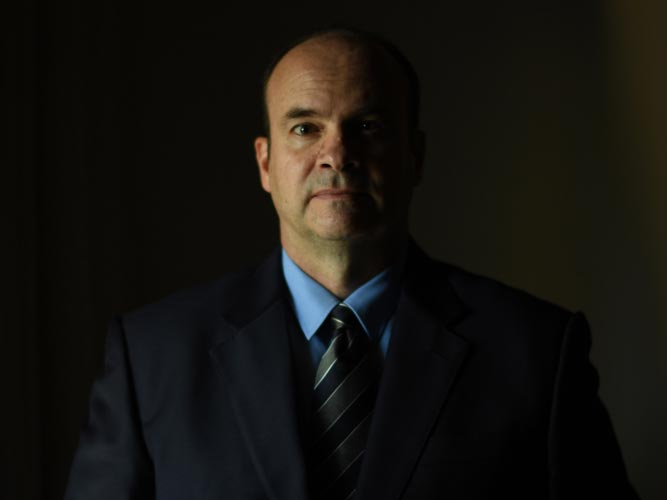
Trent Munday is the Senior Vice President of Mandara Spa. He has an eclectic resume of professional experience, which includes a year playing American football (in Australia) and a stint as a bellman in a 4-star Melbourne hotel, before moving up and out of the ranks to become the Program Manager for Accommodation Services for the Sydney Olympic Village (for the 2000 Sydney Olympics). After that he moved on to open resorts for Six Senses, and then COMO before ultimately joining Mandara Spa, where he still finds himself nearly 15 years later.
A refreshing personality in the spa and wellness industry, those who follow Munday know that he always has something to say – or a questions to ask – on his website and social media accounts. He offers equal parts insight and unfettered criticism, most of which is geared towards helping hotel spa owners and managers improve business operations.
One of his most common themes is the “Spa of Tomorrow” – what does the future of the industry look like, and how will things change? He has also mercilessly tackled the notion that “spa” and “wellness” must go hand in hand, arguing that they actually don’t.
We spoke with Munday about some of his pet topics, and asked him to elaborate. Here’s what he had to say.

The global older population is growing dramatically. Can you please share your thoughts on how the world’s aging population will affect the spa industry in a few years?
I believe there is a massive role for spas to play in an aging world. I expect that we will see a significant increase in aged care homes and communities. Even in Asia, where traditionally the elderly have been cared for within the family unit and family home, I see this happening more and more. Whether we think about spas as we know them today, or in a different iteration, the concept of spas in aged care homes and communities, to me, is a no-brainer. Beyond just the physical benefits of a massage, for example, there’s also the more emotional, deeper benefits of being cared for. In my experience that is something that many of the folks in these aged care facilities long for.
Can you speak a bit about your opinion that spas don’t have to do “wellness” and why not? And what this means?
Wellness is a concept the spa industry has latched onto as our latest shiny new thing (and more recently, CBD), We say, “Of course spa and wellness go together. Who else should be in charge of Wellness? It must be us.” And that’s fine. But as more and more people are starting to become aware of it, wellness shouldn’t just live in the spa. For a hotel to have solid wellness offerings, wellness needs to be instilled in food & beverage, housekeeping, engineering, and basically all elements and areas of the hotel. But let’s fast forward 10-15 years: the new hotel has been built to wellness standards, the F&B team is living and breathing Wellness Cuisine, the Concierge and Butler teams are well-versed in where to find the best wellness-related classes, services and activities in the local area – and can even offer you a range of in-room, self-led, virtual wellness activities. In this future world, do we still need the spa to do wellness?
You have said that the spa of the future is 20% of what it is today and 80% something else. What does that mean?
Hotel spas have not really evolved over the past 25 years of so. Sure, there have been some innovations in design, equipment, furniture, and skincare – though not nearly as much true innovation as the providers of these elements would have us believe. But the core offering is still much the same – massage, facial, manicure, pedicure. Just take a look at a spa menu from 15-20 years ago. Admittedly, some spas have added more ‘Mind & Soul’ elements, like meditation, mindfulness, etc. But these represent a small part of their spa menu and tiny part of the overall spa industry offering.
I see the Spa of Tomorrow as more of a multi-functional, multi-disciplinary type of facility. The 20% will be what we know today (massage, facial, etc). The other 80% could be anything. Maybe a business center or coworking space in a corporate city hotel. Maybe a live, organic restaurant, kitchen, and cultural center in a remote resort hotel. To me, the 80% is not only different from what we have today, but can also vary dramatically from one spa to another.
If you’re 20% massages and manicures and 80% business center, are you still a spa?
Sure. Why not? Who decided what should be included and offered at a spa anyway? For many years, and in fact still to this day, people argue over whether a spa needs to have water elements to genuinely be considered a spa. While that is still being debated, why not throw in a few more elements to the mix?
Is this specific to hotel spas?
My experience is in hotels and resorts. Day spas is not an area I’m overly familiar with. But I do believe that many of the dynamics of hotel spas also hold true for day spas. We certainly share many of the same challenges.
How is marketing changing in this industry and how should it be changing to move into the future?
First of all, I think it’s important to understand what marketing is.
Marketing is defined by the American Marketing Association as “the activity, set of institutions, and processes for creating, communicating, delivering, and exchanging offerings that have value for customers, clients, partners, and society at large”.
Most people tend to think of marketing as just the communication part. Over the years, I think the industry has done a really good job of that — maybe too good. But we forget that marketing is also about creating and delivering a product or service that has value to the market.
With that context in mind, the spa industry will need to focus more on needs than wants. Right now, for most of us, spa is a ‘nice to have,’ not a ‘must have.’ I believe until we can make spa a ‘must have,’ we will struggle to remain relevant in a noisy world. To be clear, that does not necessarily mean we need an entirely different offering. Massage, for example, could still be an important element of the Spa of Tomorrow. But we will need to ensure that there are some meaningful, tangible benefits to that massage and make sure those benefits are communicated in such a way that people understand why they need it.
Marketing in the spa industry of tomorrow needs to be less about the communication element and more about the creating & delivering element.
You have talked about the future of status symbols and how these symbols are changing. Does spa and wellness have to be inexorably linked to status?
Not at all. Indeed, if we are able to shift the focus from wants to needs, the idea of spa as a symbol of status should start to disappear. Lots of people within the industry have been saying for a long time that we need to ensure spa is not just for the wealthy. The problem has been, at least up until now, the business model of most spas, especially hotel spas, simply doesn’t allow them to cater to the lower socio-economic demographic. Thus far, most countries have struggled with the idea of democratizing healthcare, of making good healthcare available to all. With wellness, however, I believe there is a better chance of making it accessible to all. Healthcare is about treating an illness, whereas wellness is about preventing it. So if we can prevent more illness, that should in turn reduce the financial burden on the system. And, with this, the democratization of wellness becomes a real possibility.
Spa Executive magazine is published by Book4Time, the world’s most innovative spa, salon, wellness, and activity management software. Learn more at Book4Time.com.



